Historic RARE 1975 African American BLACK Modern Lithograph, Cleveland BELLOW
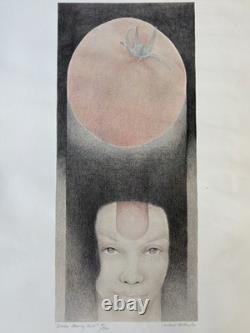
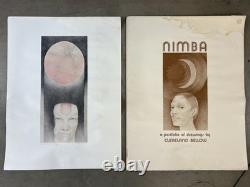
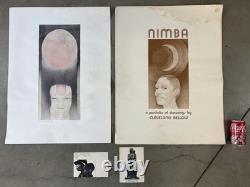
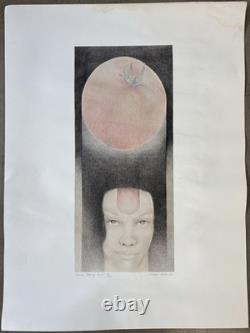
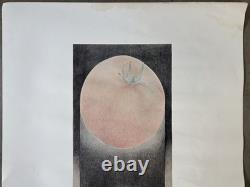
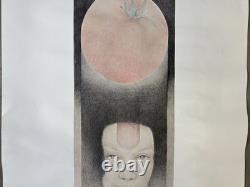
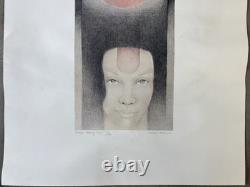
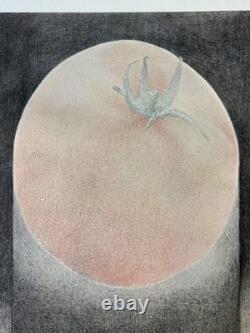
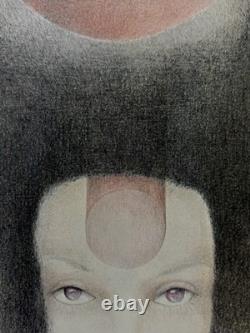
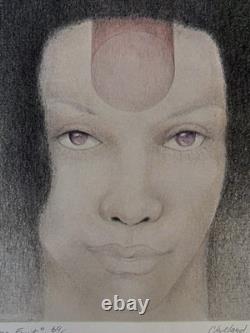


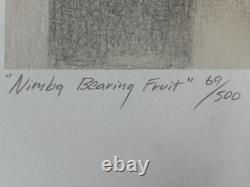



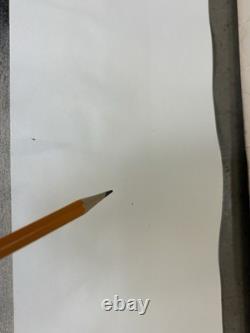
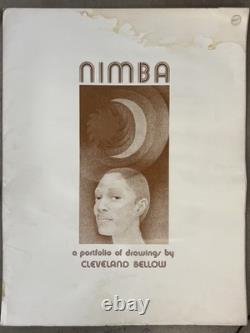
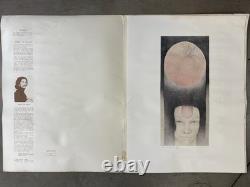
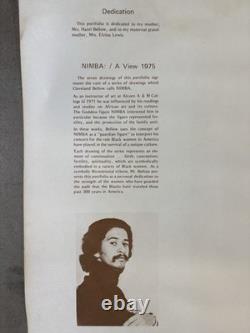
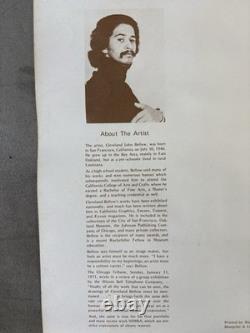
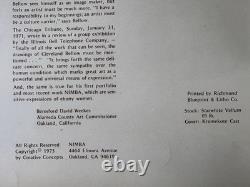
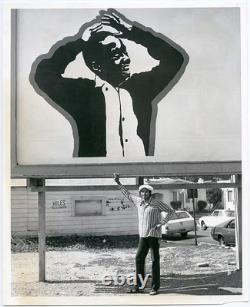
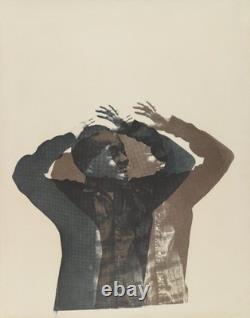

This is a lovely and Historic RARE 1975 African American BLACK Modern Lithograph on Paper, by the talented and socially conscious late African American Civil Rights Activist, muralist, and fine artist, Cleveland Bellow 1946 - 2009. This fascinating piece depicts the portrait of a beautiful young woman with bright purple, amethyst hued eyes. The woman stares directly at the viewer's gaze.
Above her is a large tomato or fruit, which casts a beam of red light downward to her, creating a halo like aura. Hand titled and numbered in pencil below the image, at the lower left edge: Nimba Bearing Fruit. " Additionally, this piece is hand signed and dated: "Charles Bellow'75, below the image, at the lower right edge.
This lithograph is approximately 18 x 24 inches. Good - Fair overall condition for decades of age and storage, with some light speckles of soiling, and some waviness to the thick woven paper sheet of the print. Additionally, this artwork comes with its original 1975 folio sleeve, which has moderate - heavy soiling throughout please see all photos carefully. This artwork was acquired from the contents of the long defunct Gallery/Tanner in Los Angeles, California, which was founded by African American fine artist and luminary, Samella Lewis. I acquired the entire remaining contents of this closed down and important early Los Angeles African American art gallery, and will be listing many more important, historic, and incredibly rare 1960's - 1970's Black Arts Movement artwork and ephemera in the days and weeks to come.If you like what you see, I encourage you to make an Offer. Please check out my other listings for more wonderful and unique artworks! 1946 - San Francisco, California. Cleveland Bellow (Born 1946) is active/lives in California. Cleveland Bellow is known for Painter, printmaker, photographer.
1970 was a turbulent year in which race and identity were central issues in society, much as they continue to be today. These ten billboards, sponsored by the Oakland Museum and the Foster-Kleiser Billboard Company, offered the artist an opportunity to depict this social reality on a public scale like never before. So, specifically, what do these billboards say?
Bellow doesn't give you an obvious answer to this question. The boy in his work stands with his hands raised above his head, but it's unclear whether he is raising his hands voluntarily or by command. His facial expression is also unclear: Is he smiling in laughter? Who is he looking at? No title or text explains the image.
It's clear that Bellow left this artwork open to interpretation; some may see a portrait of a happy young Black boy, while others may find different personal meanings in the work. Although we can't be certain of Bellow's intention, there are some contemporary visual connections in his work that are hard to ignore. Hands up, don't shoot.
The phrase became a slogan at protests after the killing of Michael Brown on August 9, 2014, in Ferguson, Missouri. Contemporary viewers may draw a connection between this tragic event and the billboard figure's raised hands, as it speaks to the long history of violence by police toward communities of color, especially against young Black men. This is an issue that Oakland residents and the entire Bay Area knew all too well. In 1966, a San Francisco police officer shot and killed 16-year-old Matthew Johnson as he was running away, prompting the Hunter's Point Rebellion. In the same year, The Black Panther Party for Self-Defense was organized to protect communities of color from police brutality.
Black neighborhoods in Oakland, where many of these billboards were installed, were frequent targets of this violence. How does this historical context add potential meaning to the social reality Bellow portrayed? Were these billboards a coded message about police violence and racial injustice or does this work hold a different meaning?
Although the ambiguity of Bellow's billboards makes it impossible to be sure of their meaning, it's this very ambiguity that gives these billboards their power. It raises questions for viewers, allowing them to find their own interpretation. What does Bellow's work mean to you? The exhibition features works by artists who were on the front lines of creating social and political change, altering both the course of history-and the canon of art history-for decades to come.
The hardest part of this series is coming across an artist where limited biographical information exists. Bay area artist and printmaker Cleveland Bellow showed work in over 60 shows throughout his career and taught art in addition to his civic engagement as Alameda County's Art Commissioner. Bellow passed away from pancreatic cancer in 2009, and unfortunately catalogues and oral histories of his career and practice are difficult to come by online. In 1970 the Oakland Museum and the Foster-Kleiser Billboard Company offered artist Cleveland Bellow the opportunity to depict a glimpse of the social reality on a public scale like never before, as part of the trend of public Black art sweeping the Nation.
He then reproduced on this billboard-scale the print of a young boy (Unitled) who holds his hands behind his head, with an undefined facial expression. The most intriguing aspect is that Bellow never explained what is the very meaning of this image, leaving it open to different interpretations: is the boy smiling in joy or is he displaying a concerned and scared act of surrender? And if so, towards whom?
The many events that dotted the history of the tormented social integration of the African-American community could easily suggest a connection between so many tragic episodes and the figure's raised hands. But it's this very ambiguity that gives these billboards their power and - as art has done so many times along human history - allows the viewers to raise the most meaningful questions, doubts and interpretation regarding the society in which they are living.

